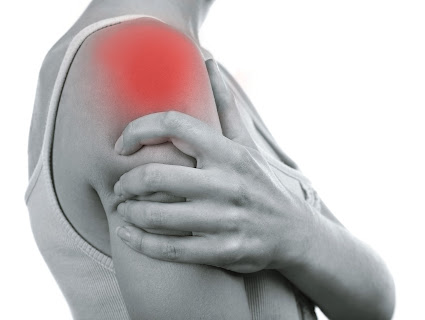SHOCK HIP AND SHOULDER ARTHRITIC PAIN AWAY
SHOCK HIP AND SHOULDER ARTHRITIC PAIN AWAY
A novel outpatient procedure offers lasting pain relief for patients suffering from moderate to severe arthritis in their hip and shoulder joints, according to a study presented at the annual meeting of the Radiological Society of North America (RSNA). Researchers said the procedure could help reduce reliance on addictive opiates.
People with moderate to severe pain related to osteoarthritis face limited treatment options. Common approaches like injections of anesthetic and corticosteroids into the affected joints grow less effective as arthritis progresses and worsens.
"Usually, over time, patients become less responsive to these injections," said Felix M. Gonzalez, M.D., from the Radiology Department at Emory University School of Medicine in Atlanta, Georgia. "The first anesthetic-corticosteroid injection may provide six months of pain relief, the second may last three months, and the third may last only a month. Gradually, the degree of pain relief becomes nonsignificant."
Without pain relief, patients face the possibility of joint replacement surgery. Many patients are ineligible for surgery because of health reasons, whereas many others choose not to undergo such a major operation. The only other viable option for those patients may be opiate painkillers, which carry the risk of addiction.
Dr. Gonzalez and colleagues have been studying the application of a novel interventional radiology treatment known as cooled radiofrequency ablation (c-RFA) to achieve pain relief in the setting of advanced degenerative arthritis. The procedure involves the placement of needles where the main sensory nerves exist around the shoulder and hip joints. The nerves are then treated with a low-grade current known as radiofrequency that "stuns" them, slowing pain transmission to the brain.
For the new study, 23 people with osteoarthritis underwent treatment, including 12 with shoulder pain and 11 with hip pain that had become unresponsive to anti-inflammatory pain control and intra-articular lidocaine-steroid injections. Treatment was performed two to three weeks after the patients received diagnostic anesthetic nerve blocks. The patients then completed surveys to measure their function, range of motion, and degree of pain before and at three months after the ablation procedures.
There were no procedure-related complications. Both the hip and shoulder pain groups reported a statistically significant decrease in pain with a corresponding increase in dynamic function after the treatment.
"In our study, the results were awe-inspiring and promising," Dr. Gonzalez said. "The patients with shoulder pain had a decrease in pain of 85% and an increase in function of approximately 74%. In patients with hip pain, there was a 70% reduction in pain and again in the function of approximately 66%."
The procedure offers a new alternative for patients who are facing the prospect of surgery. Also, it can decrease the risk of opiate addiction.
"This procedure is a last resort for patients who are unable to be physically active and may develop a narcotic addiction," Dr. Gonzalez said. "Until recently, there was no other alternative for the treatment of patients at the end of the arthritis pathway who do not qualify for surgery or are unwilling to undergo a surgical procedure."
At last year's RSNA annual meeting, Dr. Gonzalez presented similarly encouraging results from a study of a similar procedure for knee arthritis treatment. Together, the knee, shoulder, and hip articulations account for approximately 95% of all arthritis cases.
The procedure could have numerous applications outside of treating arthritic pain, Dr. Gonzalez explained. Potential uses include treating pain related to diseases like cancer and sickle cell anemia-related pain syndrome, for example.
"We're just scratching the surface here," Dr. Gonzalez said. "We would like to explore the efficacy of the treatment on patients in other settings like trauma, amputations, and especially in cancer patients with metastatic disease."
Co-authors are Omar N. Kallas, M.D., Nima Kokabi, M.D., Zachary Bercu, M.D., David Reiter, Monica B. Umpierrez, M.D., Yi N. Guo, Adam D. Singer, M.D., Janice M. Newsome, M.D., Shervin Oskouei, Nickolas Reimer, and Philip K. Wong, M.D.




I first doubted It was not true but decided to try, when I contacted this herbal physician via his e-mail, I purchased herpes herbal medicine and received it within 7 days and used it as prescribed, I tested negative within 3 weeks use, do not loose hope to contact him early If you need help, you can contact him on email dr.chalaherbalhome@gmail.com or you can visit his website on http://drchalaherbalhome.godaddysites.com or https://mywa.link/dr.chalaherbalhome am convinced he can help you too
ReplyDelete